This article was medically reviewed by Lacy Windham, MD. Lacy Windham, MD, is a Board-Certified Obstetrician & Gynecologist in Cleveland, Tennessee. Dr. Windham attended medical school at the University of Tennessee Health Science Center in Memphis. Her residency was completed at Eastern Virginia Medical School in Norfolk, Virginia. She was the recipient of multiple awards during her residency training, including Most Outstanding Resident in Maternal Fetal Medicine, Most Outstanding Resident in Oncology, Most Outstanding Resident Overall, and Special Award in Minimally Invasive Surgery.
wikiHow marks an article as reader-approved once it receives enough positive feedback. In this case, 100% of readers who voted found the article helpful, earning it our reader-approved status.
This article has been viewed 365,456 times.
Experts say you should set your heating pad on the lowest temperature while you're pregnant to prevent you from overheating.[1] Research suggests that getting overheated might be harmful during your pregnancy, but it's usually safe to use a heating pad if you don't let yourself get hot.[2] You can use a heating pad to ease minor aches and pains brought on by pregnancy, which will hopefully provide you with relief. If you feel worried about applying heat, you might try cold treatments instead.
Steps
Using a Heating Pad During Pregnancy
-
1Wear the pad for short periods of time. The most important thing to remember while pregnant is that your core body temperature needs to be kept lower than 102.2 degrees. Because of this, you need to ensure that you do not use the heating pad for too long.
- The normal cut off for a heating pad is 20 minutes. This should be the right amount of time to use it for one session. Make sure you give yourself a break between uses, so your body has time to cool back down.[3]
-
2Use the lower temperature settings. With excessive use or on high settings, heating pads can cause skin burns or increase your body temperature too much. Do not sleep while using a heating pad, and keep the pad on the lowest setting that gives you relief.
- Generally, you should start with the lowest setting and move up. However, you should never use the highest setting while pregnant.
Advertisement -
3Use on a localized area. A heating pad should not be used to heat large areas of your body. This is not good for your skin or your body temperature. The more of your body that is exposed to the heating pad, the higher your body temperature will rise.
- Instead, just use the pad on your back, knee, or shoulder, one area at a time.
-
4Use the heating pad while awake. Make sure you only use the heating pad while you are awake. If you use it while sleeping, this can cause serious problems. You could accidentally leave it on and burn your skin or heat your body temperature too high.
- Make sure you turn it off before you get into bed and don't use it in bed at all. You don't want to fall asleep with it on accidentally.
-
5See your doctor for abdominal pain. If you are having pains in your abdomen, you should see your doctor immediately. There could be something more serious going on with your baby. For any pains near the abdomen, you should not use the heating pad. Although there is no direct evidence that the electromagnetic forces involved with powering heating pads can cause harm to your baby, it is possible that sustaining a temperature of over 103 °F (39 °C) may cause developmental problems.
- Due to this possibility, do not ever place a heating pad directly on your abdomen.
- Consider substituting a warm spare blanket for the heating pad, and be sure to remove it when your skin is quite warm to the touch.
-
6Use a heating pad to warm the bed. If you are nervous about applying heating pads to your body while pregnant because of skin care or the small volume of electric currents they emit, you may wish to consider ways to get some of the benefits of a heating pad without direct contact. Turn on an electric blanket or heating pad and place it under your blanket or in between your sheets to warm the bed. Remove it or turn it off once you are ready to go to bed or lay down.
- This will enable you to enjoy the warmth the heating pad would provide without direct contact with the pad or the flow of electric currents.
-
7Wrap the heating pad in a towel or blanket. To subdue the effects of a heating pad, you can cover it with another piece of cloth, such as a towel or blanket. Wrapping a heating pad in another layer of clothing, such as a sweatshirt that no longer fits, makes it safer to use a heating pad on your muscles.
- If your back hurts, try placing the heating pad beneath a lightweight pillow that you position behind your back while you recline on a couch or bed. Just remember that the pad is on and that it should be turned off before you fall asleep to prevent a fire or burn hazard.
Using Cold Methods Instead
-
1Use a pre-made cold compress. Some women find that cool treatments improves the pain relief or inflammation if used first. If you experienced a specific and minor injury to your lower back, use a cold compresses to treat the pain for the first few days. Start with a pre-made ice pack or cold compress to cool the area. Leave the pack on for no more than 20 minutes before taking the compress off.[4]
-
2Make your own cold compress. Instead of a pre-made muscle ice pack, you can make your own cold compress by filling a Ziploc bag with ice, filling a water bottle with cold water, wetting a washcloth with cold water, or grabbing a bag of frozen vegetables and wrapping it in a towel. These can be applied to the skin instead of treatments with a heating pad.
- The same time limit applies to these methods as well. Skin that are exposed to cold conditions for too long can develop frostbite.[5]
-
3Try alternating cold and warm treatments. Switching back and forth between warm and cool treatments may relieve muscle or backaches more quickly, and alternating the two treatments may help prevent overheating your skin.
- Cooling your skin and muscle before applying the heating pad may help the pad seem warmer on a lower setting.
References
- ↑ https://www.acog.org/patient-resources/faqs/pregnancy/back-pain-during-pregnancy
- ↑ https://kidshealth.org/en/parents/pregnancy-precautions.html
- ↑ https://www.babycenter.com/pregnancy/health-and-safety/is-it-safe-to-use-a-heating-pad-for-sore-muscles-during-preg_1245286
- ↑ http://americanpregnancy.org/pregnancy-health/back-pain-during-pregnancy/
- ↑ http://www.mayoclinic.org/healthy-lifestyle/pregnancy-week-by-week/in-depth/pregnancy/art-20046080?pg=2
About This Article
If you want to use a heating pad during pregnancy, make sure you only use it in ways that won't alter your core body temperature, which could be harmful for your baby. To do this, limit your use to 20 minutes at a time, and never sleep with the heating pad so you don't overheat. Instead of using the heating pad near your stomach, try only using it locally, for instance, on your knee, back, or shoulder. If you're nervous about using a heating pad during pregnancy, instead place it under your blanket to warm the bed, then turn it off once you’re ready to lie down. For more tips from our Medical co-author, including how to wrap your heating pad in a blanket to make it safer, keep reading!
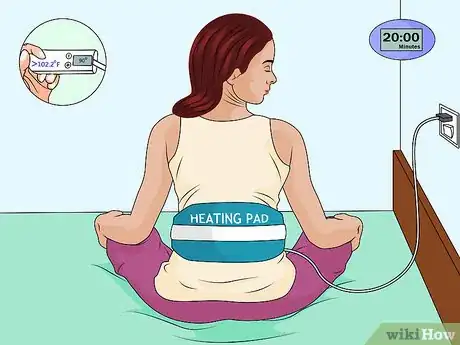
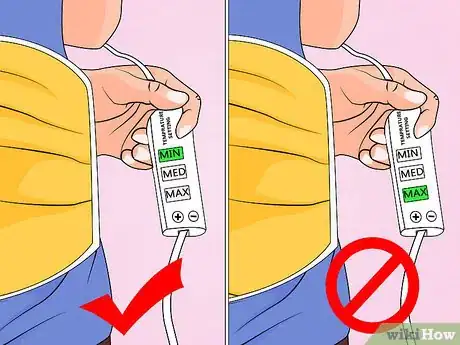
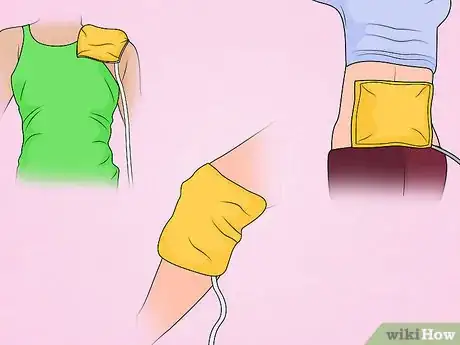
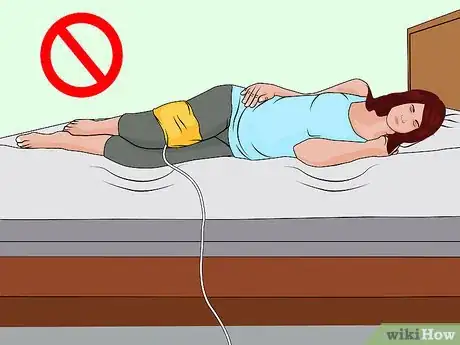
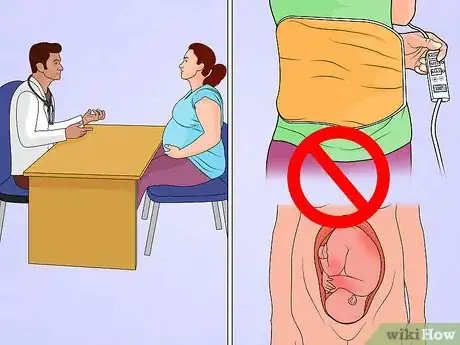
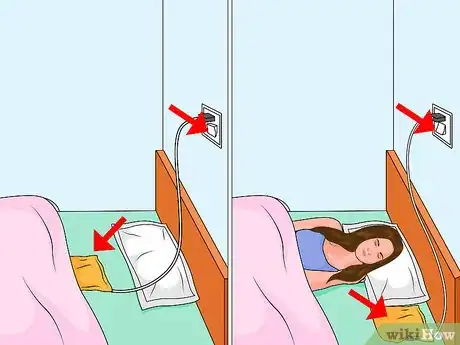
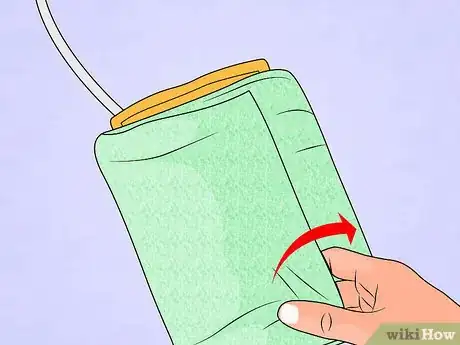
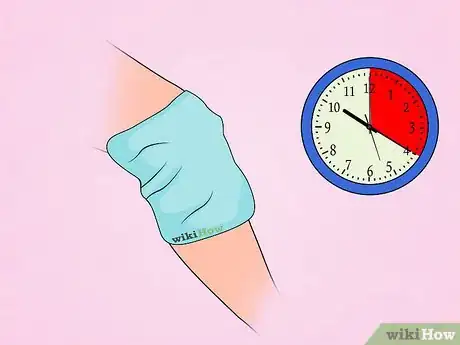
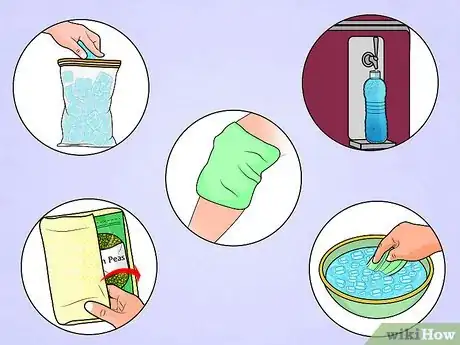
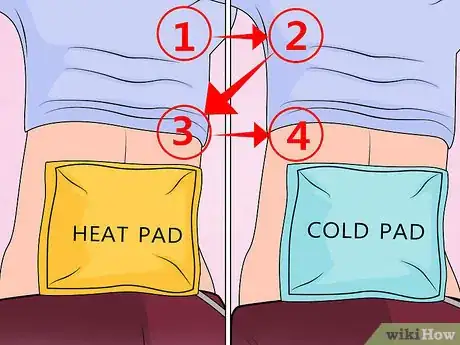


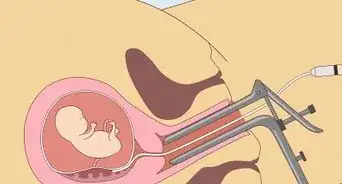

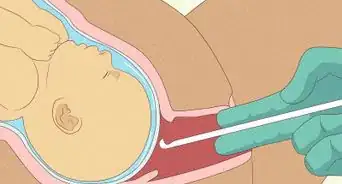





















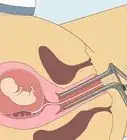




































Medical Disclaimer
The content of this article is not intended to be a substitute for professional medical advice, examination, diagnosis, or treatment. You should always contact your doctor or other qualified healthcare professional before starting, changing, or stopping any kind of health treatment.
Read More...